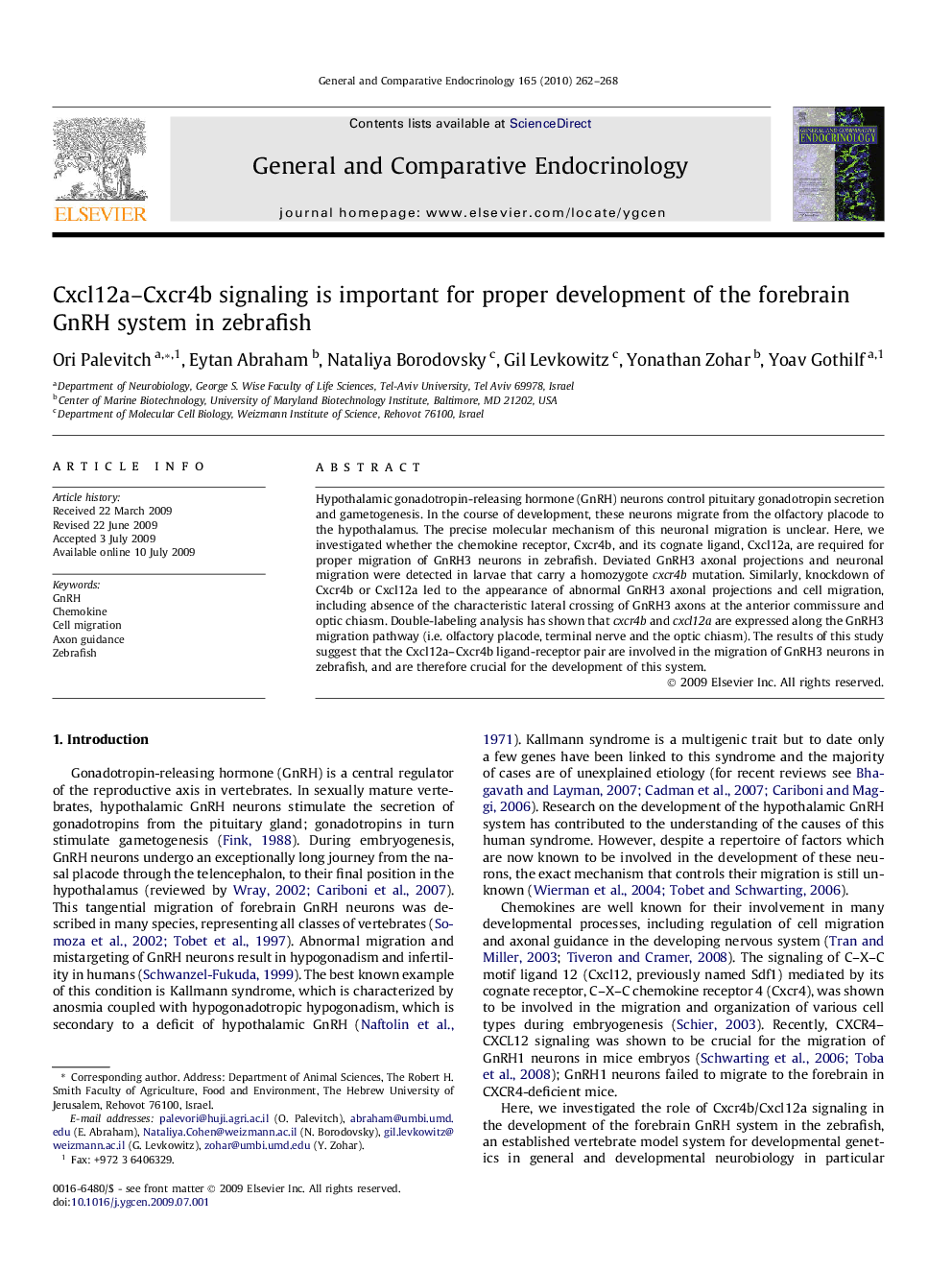| Article ID | Journal | Published Year | Pages | File Type |
|---|---|---|---|---|
| 2801451 | General and Comparative Endocrinology | 2010 | 7 Pages |
Hypothalamic gonadotropin-releasing hormone (GnRH) neurons control pituitary gonadotropin secretion and gametogenesis. In the course of development, these neurons migrate from the olfactory placode to the hypothalamus. The precise molecular mechanism of this neuronal migration is unclear. Here, we investigated whether the chemokine receptor, Cxcr4b, and its cognate ligand, Cxcl12a, are required for proper migration of GnRH3 neurons in zebrafish. Deviated GnRH3 axonal projections and neuronal migration were detected in larvae that carry a homozygote cxcr4b mutation. Similarly, knockdown of Cxcr4b or Cxcl12a led to the appearance of abnormal GnRH3 axonal projections and cell migration, including absence of the characteristic lateral crossing of GnRH3 axons at the anterior commissure and optic chiasm. Double-labeling analysis has shown that cxcr4b and cxcl12a are expressed along the GnRH3 migration pathway (i.e. olfactory placode, terminal nerve and the optic chiasm). The results of this study suggest that the Cxcl12a–Cxcr4b ligand-receptor pair are involved in the migration of GnRH3 neurons in zebrafish, and are therefore crucial for the development of this system.
